How to: achieve an ergonomic set up

Get set up in a few easy steps
An ergonomically adjusted bike prevents pain and improves your efficiency, whether you ride a city bike, road bike or mountain bike.
We'll show you how to adjust your bike to suit you in just a few simple steps.
1. The saddle should always be level
To protect your upper body and arm muscles, it is important that your saddle is adjusted with the help of a spirit level. Place the level on the saddle and adjust the angle using the bolts underneath the saddle.
As you tighten the front bolt and loosen the rear bolt, the saddle will tilt forward. If the front tip of the saddle needs to be higher, tighten the rear bolt and loosen the front bolt slightly.
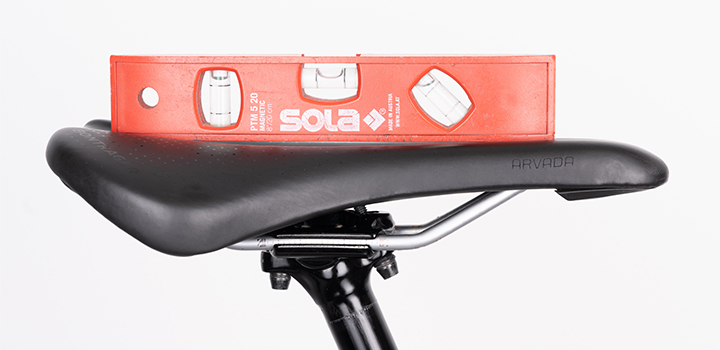
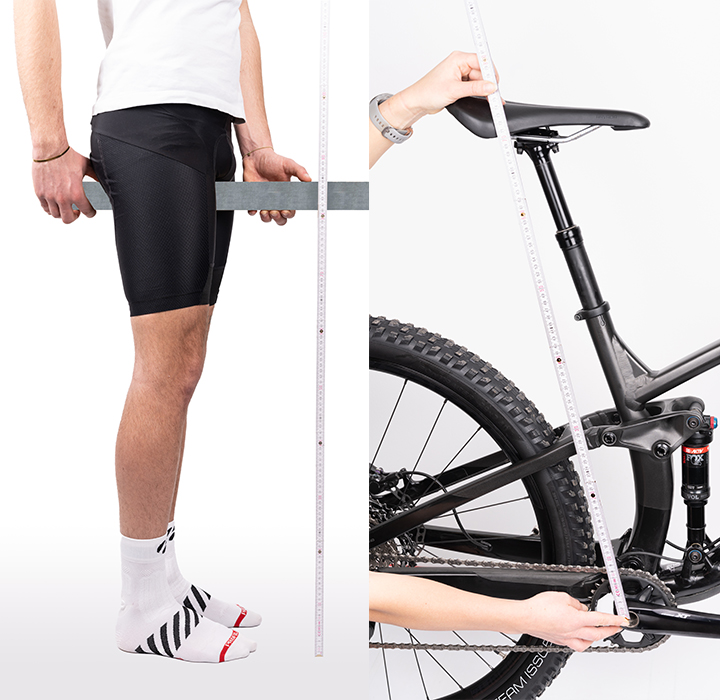
2. Measure your inside leg
Ideally you should use a spirit level and a measuring stick. The measurement will be most accurate if you take it wearing underwear and no shoes. Take the level, hold it horizontally between your legs and measure the distance to the ground. Use the following formula to calculate the perfect starting height for your saddle.
Calculate the saddle height with the following formula:
Saddle height = inside leg x 0.885
For example:
If your inside leg is 82 cm, your saddle height is 72.57 cm.
82 cm x 0.885 = 72.75 cm
You can use this value to set you saddle height by measuring from the centrr of the bottom bracket to the top of the saddle. Make sure the measuring stick runs along the seat post.
If you have a retractable seat post, make sure the cable has enough length so it can move easily with the new height.
3. Adjust the offset
To correctly determine the saddle offset, sit on your bike and make sure that both the crank and pedals are level to the ground and the ball of your foot is placed directly on top of the pedal axle. Hold a line with a weight at the bottom below your kneecap. The saddle offset is set correctly when the weight falls exactly through the pedal axle.
If the weight falls behind the pedal axle, the saddle must move further forward. If it falls in front of the pedal axle, the saddle must move backwards. To move the saddle forward or backward, loosen the bolts attaching the saddle to the seat tube underneath the saddle.
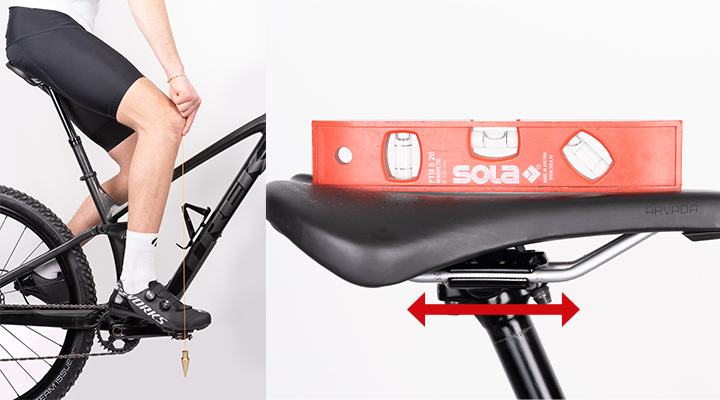
4. Adjust the brake lever
Once the saddle is adjusted, it's time to set up you cockpit.
First, loosen the screws of the brake levers so they can move easily. Sit on your bike, hold onto the handlebars and stretch your index finger forward. Move the lever up or down so that the optical line through your forearm, hand and fingers is completely straight. A bend in your wrist will cause unnecessary strain on your body. Next, adjust how far the lever is from the end of the handlebar.
You should be able to grip it well with one or two fingers, depending on the lever.
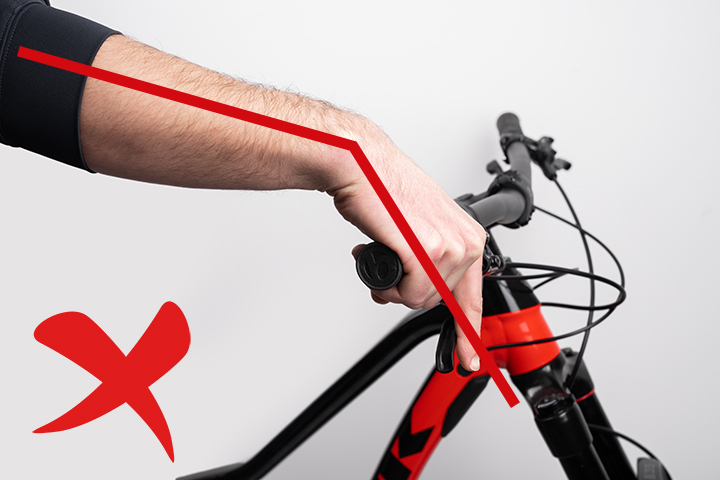
Wrong: The brake lever is too far down, the wrist bends downwards.
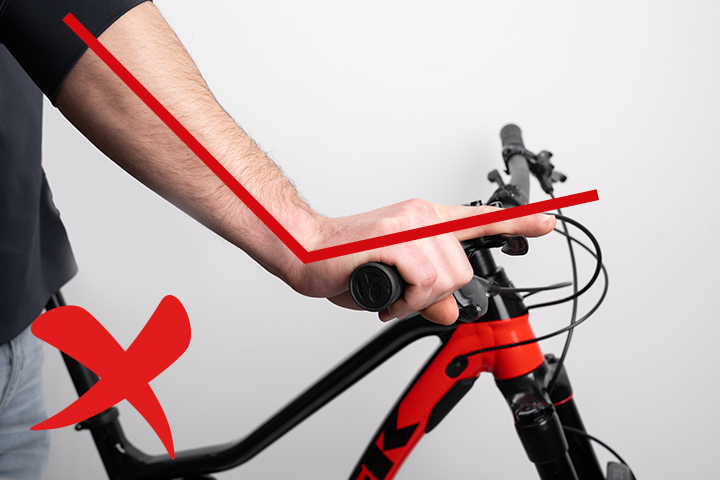
Wrong: The brake lever is too far up, the wrist is bent upwards.
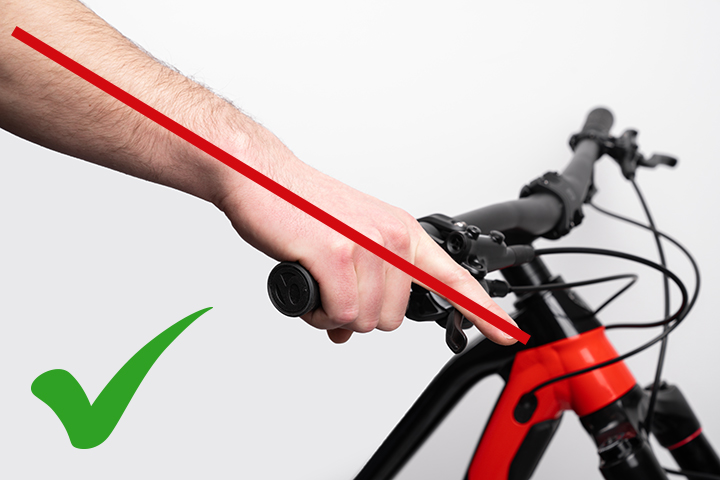
Correct: Place the palm of your hand on the handlebar and stretch the index finger straight forward.
Well done, that's the basics!
If you wan a professionally set up bike, feel free to contact us for a Retül Bike Fitting. You can find more information about our Bike Fitting Service here.
